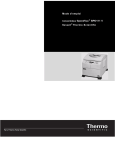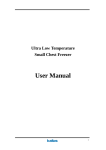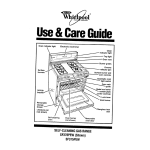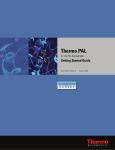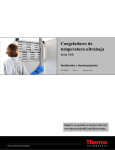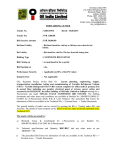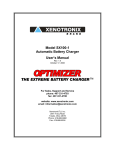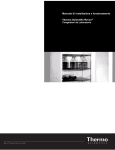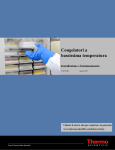Download 39125H51E Front Cover.fm
Transcript
Installation and Operation Manual Thermo Scientific Cryogenic Storage Freezers 39125H51 Rev. E © 2011 Thermo Fisher Scientific. All rights reserved. “Suva®” is a registered trademark of DuPont. “Mylar®” is a registered trademark of DuPont. “Armaflex®” is a registered trademark of Armacell International GmBH. All other trademarks are the property of Thermo Fisher Scientific Inc. and its subsidiaries. 2007 Thermo Fisher Scientific. All rights reserved. “Suva®” is a registered trademark of DuPont. All other trademarks are the property of Thermo Fisher Scientific Inc. and its subsidiaries. Thermo Scientific Cryogenic Storage Freezers Installation and Operation Table of Contents 1 About Cryogenic Models 2 Safety Precautions ............................................................ 1 ................................................................. 1 3 General Recommendations 3.1 Temperature Monitoring 3.2 Recommended Use 3.3 Initial Loading 4 Pre-Installation 4.1 Unpacking 5 Installation 5.2 Wiring . . . . . . . . . . . . . . . . . . . . . . . . . . . . . . . . . . . . . . . . . . . . . . . . . . . . . . . . . . . . . . . . . . . . . . .1 . . . . . . . . . . . . . . . . . . . . . . . . . . . . . . . . . . . . . . . . . . . . . . . . . . . . . . . . . . . . . . . . . . . . . . . . . . . .1 .................................................................... 1 . . . . . . . . . . . . . . . . . . . . . . . . . . . . . . . . . . . . . . . . . . . . . . . . . . . . . . . . . . . . . . . . . . . . . . . . . . . . . . .1 . . . . . . . . . . . . . . . . . . . . . . . . . . . . . . . . . . . . . . . . . . . . . . . . . . . . . . . . . . . . . . . . . . . . . . . . . . . . . . . .2 . . . . . . . . . . . . . . . . . . . . . . . . . . . . . . . . . . . . . . . . . . . . . . . . . . . . . . . . . . . . . . . . . . . . . . . . . . . . . . . . . .2 5.3 Leveling . . . . . . . . . . . . . . . . . . . . . . . . . . . . . . . . . . . . . . . . . . . . . . . . . . . . . . . . . . . . . . . . . . . . . . . . . . . . . . . .2 ......................................................................... 3 6.1 Control Panel Features 6.2 Start Up . . . . . . . . . . . . . . . . . . . . . . . . . . . . . . . . . . . . . . . . . . . . . . . . . . . . . . . . . . . . . . . . . . . .1 ........................................................................ 2 5.1 Location 6 Operation .......................................................... 1 . . . . . . . . . . . . . . . . . . . . . . . . . . . . . . . . . . . . . . . . . . . . . . . . . . . . . . . . . . . . . . . . . . . . .3 . . . . . . . . . . . . . . . . . . . . . . . . . . . . . . . . . . . . . . . . . . . . . . . . . . . . . . . . . . . . . . . . . . . . . . . . . . . . . . . . .4 6.2.1 Turning the Power On . . . . . . . . . . . . . . . . . . . . . . . . . . . . . . . . . . . . . . . . . . . . . . . . . . . . . . . . . . . . . . .4 6.2.2 Setting the Cabinet Temperature 6.2.3 Setting the Alarms 6.2.4 Alarm Reset & Status Lights 6.2.5 Alarm Test . . . . . . . . . . . . . . . . . . . . . . . . . . . . . . . . . . . . . . . . . . . . . . . . . . . . . . .4 . . . . . . . . . . . . . . . . . . . . . . . . . . . . . . . . . . . . . . . . . . . . . . . . . . . . . . . . . . . . . . . . . .4 . . . . . . . . . . . . . . . . . . . . . . . . . . . . . . . . . . . . . . . . . . . . . . . . . . . . . . . . . .4 . . . . . . . . . . . . . . . . . . . . . . . . . . . . . . . . . . . . . . . . . . . . . . . . . . . . . . . . . . . . . . . . . . . . . . . .4 6.3 Backup System (Optional) . . . . . . . . . . . . . . . . . . . . . . . . . . . . . . . . . . . . . . . . . . . . . . . . . . . . . . . . . . . . . . . . . .5 6.3.1 LN2 Precautions 6.3.2 Installation . . . . . . . . . . . . . . . . . . . . . . . . . . . . . . . . . . . . . . . . . . . . . . . . . . . . . . . . . . . . . . . . . . . . . . . .6 6.3.3 Operation . . . . . . . . . . . . . . . . . . . . . . . . . . . . . . . . . . . . . . . . . . . . . . . . . . . . . . . . . . . . . . . . . . . . . . . . .6 6.3.4 System Status Lights . . . . . . . . . . . . . . . . . . . . . . . . . . . . . . . . . . . . . . . . . . . . . . . . . . . . . . . . . . . . . . . . . . .5 . . . . . . . . . . . . . . . . . . . . . . . . . . . . . . . . . . . . . . . . . . . . . . . . . . . . . . . . . . . . . . . .6 i Thermo Scientific Cryogenic Storage Freezers 7 Maintenance and Troubleshooting 7.1 Condenser Maintenance .................................................... 7 . . . . . . . . . . . . . . . . . . . . . . . . . . . . . . . . . . . . . . . . . . . . . . . . . . . . . . . . . . . . . . . . . . .7 7.1.1 Cleaning the Condenser 7.1.2 Cleaning the Condenser Filter 7.2 Gasket Maintenance 7.3 Defrosting the Freezer . . . . . . . . . . . . . . . . . . . . . . . . . . . . . . . . . . . . . . . . . . . . . . . . . . . . . . . . . . . . . . . . .7 . . . . . . . . . . . . . . . . . . . . . . . . . . . . . . . . . . . . . . . . . . . . . . . . . . . . . . . . . . . . . . . . . . . . . .7 . . . . . . . . . . . . . . . . . . . . . . . . . . . . . . . . . . . . . . . . . . . . . . . . . . . . . . . . . . . . . . . . .7 ................................................................... 8 8.1 Set Up and Operation 8.2 Power Supply . . . . . . . . . . . . . . . . . . . . . . . . . . . . . . . . . . . . . . . . . . . . . . . . . . . . . . . . .7 . . . . . . . . . . . . . . . . . . . . . . . . . . . . . . . . . . . . . . . . . . . . . . . . . . . . . . . . . . . . . . . . . . . . .7 7.6 Troubleshooting Procedures 8 Chart Recorders . . . . . . . . . . . . . . . . . . . . . . . . . . . . . . . . . . . . . . . . . . . . . . . . . . . . . . . . . . . . .7 . . . . . . . . . . . . . . . . . . . . . . . . . . . . . . . . . . . . . . . . . . . . . . . . . . . . . . . . . . . . . . . . . . . . . . .7 7.4 Alarm Battery Maintenance 7.5 Frame Heater Switch Installation and Operation . . . . . . . . . . . . . . . . . . . . . . . . . . . . . . . . . . . . . . . . . . . . . . . . . . . . . . . . . . . . . . . . . . . . . .8 . . . . . . . . . . . . . . . . . . . . . . . . . . . . . . . . . . . . . . . . . . . . . . . . . . . . . . . . . . . . . . . . . . . . . . . . . . . .8 8.3 Changing Chart Paper . . . . . . . . . . . . . . . . . . . . . . . . . . . . . . . . . . . . . . . . . . . . . . . . . . . . . . . . . . . . . . . . . . . . .8 8.4 Calibration Adjustment . . . . . . . . . . . . . . . . . . . . . . . . . . . . . . . . . . . . . . . . . . . . . . . . . . . . . . . . . . . . . . . . . . . . .8 ii Thermo Scientific Cryogenic Storage Freezers 1 About Cryogenic Models The freezers described in this manual are cryogenic models. These models are designed for optimum performance at -140ºC or -150ºC, and it is strongly recommended that you use these models at these operating temperatures. Be sure to read the maintenance instructions in Section 7. 2 Safety Precautions In this manual and on labels attached to this product, the words WARNING and CAUTION mean the following: • WARNING: a potentially hazardous situation which, if not avoided, could result in serious injury or death. • CAUTION: a potentially hazardous situation which, if not avoided, may result in minor or moderate injury or damage to the equipment. Before installing, using or maintaining this product, please be sure to read this manual and product warning labels carefully. Failure to follow these instructions may cause this product to malfunction, which could result in injury or damage. Below are important safety precautions that apply to this product: • Use this product only in the way described in the product literature and in this manual. Before using it, verify that this product is suitable for its intended use. • Do not modify system components, especially the controller. Use OEM exact replacement equipment or parts. Before use, confirm that the product has not been altered in any way. • Your unit must be properly grounded in conformity with national and local electrical codes. Never connect the unit to overloaded power sources. • Disconnect the unit from all power sources before cleaning, troubleshooting, or performing other maintenance on the product or its controls. 3 General Recommendations 3.1 Temperature Monitoring IMPORTANT NOTE: We recommend the use of a redundant and independent temperature monitoring system so that the freezer can be monitored continuously for performance commensurate with the value of product stored. Installation and Operation 3.2 Recommended Use The refrigeration system is designed to maintain cryogenic temperatures with safety only when the freezer is used for storage. These models may be used in an ambient environment up to +25ºC (77ºF). WARNING! This unit is not a “rapid-freeze” device. Freezing large quantities of liquid, or high-water content items, will temporarily increase the chamber temperature and will cause the compressors to operate for a prolonged time period. Avoid opening the door for extended time periods since chamber temperature air will escape rapidly. Room air, which is higher in humidity, replacing chamber air may cause frost to develop in the chamber more rapidly. 3.3 Initial Loading After reading and completing the Safety Considerations, Pre-Installation, Installation, and Operation sections of this manual, turn the Key Switch to the POWER ON position and adjust the temperature setpoint if necessary. The setpoint should be no warmer than -50ºC. Allow the freezer to operate at the desired temperature for a minimum of 12 hours before loading. CAUTION! IFailure to follow these procedures or overloading the unit may cause undue stress on the compressors or jeopardize user product safety. 4 Pre-Installation 4.1 Unpacking At delivery, examine the exterior for physical damage while the carrier’s representative is present. If exterior damage is present, carefully unpack and inspect the unit and all accessories for damage. If there is no exterior damage, unpack and inspect the equipment within five days of delivery. If you find any damage, keep the packing materials and immediately report the damage to the carrier. Do not return goods without written authorization. When submitting a claim for shipping damage, request that the carrier inspect the shipping container and equipment. CAUTION! Do not discard the sublids from chest-style units. The sublids are necessary to maintain correct temperature, moisture control, and economy of operation. 1 Thermo Scientific Cryogenic Storage Freezers Installation and Operation 5 Installation Do not exceed the electrical and temperature ratings printed on the dataplate located on the lower left side of the unit. 30A-250V NEMA 6-30P CAUTION! Improper operation of the equipment could result in dangerous conditions. To preclude hazard and minimize risk, follow all instructions and operate within the design limits noted on the dataplate. 5.1 Location Figure 1. Plug Style for 60Hz Single-phase Models Install the unit in a level, well-ventilated area free from vibration, with a minimum of six inches of space on the sides and 12 inches behind the rear. Refer to Section 5.3 for further instructions on leveling cabinets. Allow enough clearance so that the lid can swing open at least 90 degrees. Always connect the freezer to a dedicated (separate) circuit. Each freezer is equipped with a service cord and plug designed to connect it to a power outlet which delivers the correct voltage. Supply voltage must be within +10%, -5% of the freezer rated voltage. Do not position the equipment in direct sunlight or near heating diffusers, radiators, or other sources of heat. The ambient temperature range at the location must be 59 to 77ºF (15 to 25ºC). 3-phase or 50Hz models require hard wiring to a disconnect panel. CAUTION! To allow for proper air flow, a minimum of 12 inches of clearance space is required behind the freezer. CAUTION! FLAMMABLE REFRIGERANT! Cryogenic models with voltage M, R, V and W use small quantities of the refrigerant R600a, which can form a combustible mixture when combined with oxygen. In order to conform with safety regulations, it is important to locate your freezer in a large enough space to minimize danger of combustion even in worst-case conditions (no ventilation, no air exchange, a steady refrigerant leak). Under these conditions the minimum free volume requirements would be at least 86 m3 or 3006 ft3. Note: These freezers are equipped with a standard built-in Voltage Safeguard circuit to detect and adjust low line voltage. CAUTION! Never cut the grounding prong from the service cord plug. If the prong is removed, the warranty is invalidated. 5.3 Leveling The unit must be level both front to back and side to side. To level chest models, leave the casters in place and shim the low wheel(s) with strips of sheet metal cut at least 1/2 in. wider than the caster. 5.2 Wiring CAUTION! Connect the equipment to the correct power source. Incorrect voltage can result in severe damage to the equipment. CAUTION! For personal safety and trouble-free operation, this unit must be properly grounded before it is used. Failure to ground the equipment may cause personal injury or damage to the equipment. Always conform to the National Electrical Code and local codes. Do not connect the unit to overloaded power lines. Your freezer is equipped with the plug style shown in Figure 1, unless it is a 50Hz or 3-phase model. The standard NEMA plug meets UL requirements. 2 Thermo Scientific Cryogenic Storage Freezers Installation and Operation 6 Operation 6.1 Control Panel Features 2 6 11 12 13 20 21 22 BACKUP SYSTEM SUPPLY ON check fuse cabinet temperature life-guard alert off power on SUPPLY EMPTY extreme ambient alert control set point power failure alarm on temperature failure set point security alarm test alarm reset BATTERY LOW clean filter warm alarm set point alarm battery low cold alarm set point voltageboost 16 17 1 23 7 8 3 4 Figure 2. Control Panel with Optional Backup System Before the initial start up, take some time to become familiar with the controls on your freezer. Figure 2 illustrates the Thermo Scientific Cryogenic Freezer control panel. Note: Figure 2 shows all possible functions. These functions vary depending on the options. You may not have all of the functions on your equipment. The CO2 or LN2 Backup System lights (20, 21, 22) represent status indicators for a built-in CO2 or LN2 backup system, which is optional. 1. Three position keyed Power On Switch. 2. Power On Indicator. This indicator lights when power is connected to the freezer. 3. Temperature Failure Indicator. This indicator lights when the freezer temperature deviates either above or below the alarm temperature settings. 4. Power Failure Indicator. This indicator lights when there is a power failure to the freezer (refer to Section 7 on page 7). 5. Life-Guard Alert Indicator. This indicator lights when the first stage compressor has gone into a cautionary state of operation to help prevent failure. 6. Check Fuse Light. This indicator lights when the surge protector on the main electronic panel is blown by a power surge (refer to Section 7 on page 7). 7. Alarm Test Pad. Press this pad to start an alarm test (refer to Section 5.2.5 on page 6). 8. Alarm Reset Pad. Press this pad to reset slowly blinking indicators. Slowly blinking indicators denote that the condition has occurred but is now within the given operating parameters. This pad is also depressed to temporarily silence the audible alarm (refer to Section 5.2.4 on page 5). 9. Cold Alarm Setpoint. Press this pad to set the cold alarm (refer to Section 6.2.3 on page 4). 10. Warm Alarm Setpoint. Press this pad to set the warm alarm (refer to Section 6.2.3 on page 4). 5 9 10 14 15 19 18 11. Control Setpoint. Press this pad to set the cabinet temperature (refer to Section 6.2.2 on page 4). 12. Cabinet Temperature Indicator. This indicator lights when the temperature display window is showing the cabinet temperature (refer to Section 6.2.1 on page 4). 13. Digital Temperature Display Window. This window displays chamber temperature, alarm values, etc. depending on the operating status of the freezer and the procedure being performed. 14. Decrement Pad ( ). Use this pad to decrease temperature values. 15. Increment Pad ( ). Use this pad to increase temperature values. 16. Extreme Ambient Alert. This indicator lights when the ambient temperature has exceeded the upper limit of the recommended operating range. If the Extreme Ambient Alert is activated, the ambient environment needs to be improved for proper function of the freezer. 17. Clean Filter Indicator. This indicator lights when the air cooled condenser filter is dirty (refer to Section 7 on page 7). 18. Alarm Battery Low Indicator. This indicator lights when the charge on the alarm battery is low. Press this button to display the percent of full battery charge in the digital display window. 19. Voltage Boost Indicator. This indicator lights when incoming voltage is low and the Voltage Safeguard has been activated (refer to Section 7 on page 7). Press this pad to display the current line voltage in the digital display window. 23. Alarm On/Set Point Security Indicator. This indicator lights when the alarm is activated.Also indicates that Setpoint Security is activated. The following indicators are available only when the freezer is equipped with the optional backup system (refer to Section 6.3.4 on page 6). 20. Backup System Supply On Indicator. 21. Backup System Empty Indicator 22. Backup System Battery Low Indicator. 3 Thermo Scientific Cryogenic Storage Freezers 6.2 Start Up Installation and Operation Note: Refer to Section 6.1 and Figure 2 on page 3 as you complete the following procedures. 6.2.1 Turning the Power On WARNING! You must turn the three-position key switch to the ALARM ON/SETPOINT SECURITY position to activate the alarm and place it in security operation. To start up your cryogenic freezer, complete the following steps: 1. Plug the freezer into the power outlet (refer to Section 4.2 on page 2). 2. Turn the key switch to the POWER ON position. The Power On LED and the Cabinet Temperature LED illuminate. Note: The alarm function is not active at this time. Refer to Section 5.2.3 for information about setting the alarms. In addition, the Setpoint Security will be deactivated in this key position. 3. The unit will start about 30 seconds later. 6.2.2 Setting the Cabinet Temperature 6.2.4 Alarm Reset & Status Lights The alarm reset feature ensures user acknowledgment of the occurrence of certain alarm conditions. This provides greater monitoring power by alerting the user if an alarm condition has occurred during periods when the freezer must be left unattended. The alarm conditions incorporating this feature are: • • • To set the cabinet temperature, complete the following steps: • 1. Press and hold the Control Setpoint pad. 2. The Control setpoint LED lights and the Cabinet Temperature LED goes out. 3. Press and hold to increase the temperature or to decrease the temperature. The digital display scrolls through temperature settings. 4. Release both pads when the digital temperature display window shows the correct setpoint value. Note: If no keys are pressed within ten seconds, the temperature display reverts to the cabinet temperature. • 6.2.3 Setting the Alarms To set the cold alarm, complete the following steps: 1. Confirm that the key switch is at the Power On position (Setpoint Security disabled) 2. Press and hold the Cold Alarm Setpoint pad. The LED next to this pad lights. The temperature display shows the Cold Alarm value. 3. Press and hold or to adjust the Cold Alarm Setpoint. 4. Release both pads when the digital temperature display window shows the correct setpoint value. • Temperature Failure-Warm Alarm Temperature Failure-Cold Alarm Voltage Low Power Failure Life-Guard Alert Extreme Ambient Alert During any of these alarm conditions, the corresponding indicator will flash quickly, approximately 90 times per minute. If the alarm condition then disappears, the flash rate will decrease to approximately 15 times per minute. The indicator will then remain flashing at this rate, unless the condition reoccurs, until the Alarm Reset button is pressed. Once this has occurred, the indicator will no longer be lit. In the case of TEMPERATURE FAILURE-WARM ALARM and TEMPERATURE FAILURE-COLD ALARM, if these conditions have occurred but are now within the given limits, the two indicators will alternately flash (180° out of phase). In addition, for these two temperatures failures, the highest temperature and lowest temperature, respectively, during the error condition will be saved. Prior to the temperature failure being reset, the temperature extreme may be viewed by pressing the Cabinet Temperature pad in conjunction with either the Warm Alarm Setpoint pad or the Cold Alarm Setpoint pad. Note: To set the warm alarm, complete the following steps: 1. Confirm that the key switch is at the Power On position (Setpoint Security disabled). 2. Press and hold the Warm Alarm Setpoint pad. The LED next to this pad lights. The temperature display shows the Warm Alarm value. 3. Press and hold or to adjust the Warm Alarm Setpoint. 4. Release both pads when the digital temperature display window shows the correct setpoint value. When the cabinet temperature drops below the Warm Alarm setting, turn the key switch to ALARM ON. The freezer is ready to operate. If a power failure lasting over 30 seconds occurs, the POWER ON light goes out and the POWER FAILURE light and digital temperature display flash simultaneously. Once the Alarm Reset button is depressed, the extreme temperature value is reset to the current cabinet temperature. 6.2.5 Alarm Test To test the cold and warm alarms, complete the following steps: 1. Press and hold the Alarm Test pad. The digital temperature display indicates rising temperature. When the temperature reaches the warm alarm value, the alarm sounds. Note: The temperature of the refrigerated space does not change during this procedure. Only the sensor is heated. 2. Release the Alarm Test pad, the sensor and display return to cabinet temperature in a few minutes. 4 Thermo Scientific Cryogenic Storage Freezers You can press the Audio Silence pad to silence the alarm but the alarm will ring back in five to seven minutes. You can silence the alarm in this manner as many times as necessary until the sensor cools below the warm alarm temperature. The alarm quits automatically when the sensor cools below the warm alarm value. Note: There is a limit on the alarm test feature. The alarm test will not commence if the warm alarm setpoint is more than 15 degrees warmer than the operating temperature setpoint. 6.3 Backup System (Optional) When you purchase a built-in LN2 optional backup system for the freezer, the backup system control panel is located behind a hinged panel adjacent to the grill (refer to Figure 3). Note: Always purchase the cylinders which are equipped with siphon tubes for withdrawing liquid from the bottom of the cylinder. LN2 bottles are functional at any reasonable temperature. Use this panel to set the backup initiation temperature, usually 10 to 15C warmer than the operating setpoint. Digital Temperature Display Temperature Control Setpoint Screw TEMPERATURE °C POWER OFF PUSH TO SET ON Power Switch Installation and Operation 6.3.1 LN2 Precautions The following are precautions for using liquid LN2 backup systems. WARNING! If an LN2 cylinder falls and a valve is knocked off, the cylinder becomes a deadly and completely unguided missile. Transport the cylinders in a handtruck or cart with secure chain ties for the cylinder. After cylinders are connected to the equipment, securely attach them with chains to a solid, stationary object such as a building column. WARNING! LN2 liquid is non-poisonous but it is very cold and will burn unprotected skin. Always wear protective eyewear and clothing when changing cylinders or working on the piping systems attached to an active source of liquid refrigerant. WARNING! The gases produced by evaporation of LN2 are non-poisonous but displace the oxygen in a confined space and can cause asphyxiation. Do not store the cylinders in subsurface or enclosed areas. CAUTION! When closing the cylinder valve, make sure that the injection solenoid is energized to allow all the liquid to bleed off instead of being trapped in the supply tubing. Failure to do this results in activation of the pressure relief device, which could damage the freezer and requires replacing if it is activated. CAUTION! For chest models ordered with factory installed built-in backup systems, the flow of liquid LN2 will be discontinued if the door or lid is opened during operation of the backup system. For units operated with free-standing, field installed type backup system, the flow of liquid LN2 will be discontinued upon door or lid opening only if the switch provided with the free-standing package is installed on the freezer. SETPOINT ADJUST Temperature Control Set Button Figure 3. Control Panel for Optional Built-In Backup System 5 Thermo Scientific Cryogenic Storage Freezers Installation and Operation 6.3.2 Installation Field installed systems are supplied with complete installation and operating instructions. If your system is factory installed, the freezer is shipped with a coiled length of tubing to connect the freezer to the bottles: • LN2 Inlet Conn. Copper Tubing Factory Supplied 0.625" O.D. 5/8 in. OD copper tubing covered with Armaflex insulating tubing for connection to the LN2 supply. Straighten the coiled tubing and connect one end to the labeled connection on the freezer and the other end to the supply bottle or building supply fitting. 2.375" 24.75" 6.3.3 Operation To activate the optional backup system, complete the following steps: 1. Push the Power Switch to the ON position. The digital temperature display window shows the current cabinet temperature. 2. Press and hold the Push to Set button to display the setpoint temperature in the digital temperature display window. 3. Use a small screwdriver to rotate the Setpoint Adjust screw until the correct backup operating temperature shows in the display window. The recommended setpoint is 10 to 15C above normal cabinet temperature. Note: The temperature shown in the display window is accurate to 1C. The backup system can run for a minimum of eight hours on battery power. WARNING! You must push the Power Switch to the ON position in order to activate the backup system. MACHINE COMPARTMENT REAR VIEW Figure 4. Location of LN2 Connection Site, Chest Models Only Table 1. Backup System Flow Rates – Cryogenic Freezers Lbs/hr @ 75×F Ambient Temperature (Flow Rate) Center Air Temperature -150×C -140×C -130×C -120×C 11.3 10.0 9.0 8.0 Liquid LN2 Chest Freezers 6.3.4 System Status Lights In addition to the backup control system, the built-in backup system includes main control panel system status lights. These lights are only available when the backup system is installed. • • The Supply On Indicator lights when the backup system is operating on battery power. The Backup System Battery Low Indicator lights when the backup system battery charge is low. The built-in battery charger recharges the battery to full charge when power is restored to the system. Note: • Empty 7 ft3 10 ft3 1/2 Full 9.7 8.6 7.6 6.8 Full 7.8 6.8 6.0 5.2 Empty 15.2 13.5 11.9 10.3 1/2 Full 12.0 10.4 9.4 8.3 8.9 7.8 7.0 6.1 Full Since rechargeable batteries degrade over time, the battery should be replaced after approximately three years. The Backup System Empty Indicator lights when the standby LN2 bottle is empty. 6 Thermo Scientific Cryogenic Storage Freezers 7 Maintenance and Troubleshooting WARNING! Unauthorized repair of your freezer will invalidate your warranty. Contact Technical Service at 1-800-438-4851 for additional information. CAUTION! Maintenance should only be performed by trained personnel. 7.1 Condenser Maintenance 7.1.1 Cleaning the Condenser Clean the condenser at least every six months; more often if the laboratory area is extremely dust prone. To clean the condenser, complete the following steps: 1. Pull the grill open. 2. Remove the filter. Check the fans. If a fan is not operating, contact an Authorized Service Company immediately. 3. Vacuum the condenser. 4. Replace the filter and close the grill. Installation and Operation 6. If there is freezer odor, wash the interior with a solution of baking soda and warm water. Clean the exterior with any common household cleaning wax. 7. Close the doors, restart the freezer and reload, following the instructions in Section 3.3 on page 1. 7.4 Have a technician check the condition of the alarm battery at least once a year. To replace the alarm battery, complete the following steps: 1. Remove the front grill. The alarm battery is located directly behind the grill. The terminals are the “push on” type. 2. Grasp the terminal with pliers and work it gently back and forth while pulling it off. The fittings are tight. 3. Remove the battery and put the new battery in place. Note: Clean the condenser filter every two or three months. 1. Pull the grill open. 2. Remove the filter. 3. Shake the filter to remove loose dust, rinse the filter in clean water, shake the excess water from the filter, and replace the filter. 4. Close the grill. 7.2 Gasket Maintenance Periodically check the gaskets around the door or lid for punctures or tears. Leaks are indicated by a streak of frost which forms at the point of gasket failure. Make sure that the cabinet is level (refer to Section 5.3 on page 2 for leveling information). Keep the lid gasket clean and frost free by wiping gently with a soft cloth. 7.3 Defrosting the Freezer Defrost the freezer once or year or whenever the ice buildup exceeds 3/8”. You may have to cut a strip of silicone rubber in order to remove the battery. 4. Connect the battery terminals and replace the front grill. 7.5 7.1.2 Cleaning the Condenser Filter Alarm Battery Maintenance Frame Heater Switch Cryogenic chest freezers (-140º and -150º C) have a frame heater switch which can be used to prevent or remove condensation near the freezer compartment lid. The switch is located in back of the unit near the top center, to the right of the junction box. Turning the switch to the up position heats up the frame around the lid. Heating the frame has no effect on interior cabinet temperature. You can turn on the switch whenever there is condensation near the lid. 7.6 Troubleshooting Procedures Table 2. Troubleshooting Procedures Problem Surge protector is blown. Call an Electronics Technician to check the equipment. Clean Filter indicator is on. Condenser filter is dirty. Refer to Section 7.1.2. Alarm Battery Low indicator is on. Alarm battery is low on charge. Have a technician check the alarm battery. Refer to Section 7.4. Voltage Boost indicator is on. Low incoming line voltage to the freezer. Call an electronics technician to check the power supply. No display, no fans running. No power to the unit. Call a qualified electrical service technician to check the service breaker to the outlet. To defrost, complete the following steps: 1. Remove all products and place in another cabinet. 2. Turn off the freezer. 3. Open the outer door and all inner doors. 4. Let the freezer stand with the door open for at least 24 hours. This allows both the interior and foamed refrigerant system to warm to room temperature. 5. Dispose of the ice and wipe out any water standing in the bottom of the cabinet. Solution Check Fuse indicator is on. 7 Thermo Scientific Cryogenic Storage Freezers 8 Chart Recorders Installation and Operation 8.2 Power Supply Panel-mounted six-inch seven-day recorders are available as options for all freezer models. 8.1 Set Up and Operation To prepare the recorder to function properly, complete the following steps: 1. Open the recorder door to access the recorder. 2. Connect the nine volt DC battery located at the recorder’s upper right corner. This battery provides backup power. 3. Install clean chart paper (refer to Section 8.3 below). 4. Remove the plastic cap from the pen stylus and close the recorder door. Recorder operation begins when the system is powered on.The recorder may not respond until the system reaches temperatures within the recorder’s range. 9 Volt Battery Chart Buttons The recorder normally uses AC power when the system is operating. If AC power fails, the LED indicator flashes to alert you to a power failure. The recorder continues sensing cabinet temperature and the chart continues turning for approximately 24 hours with back-up power provided by the nine-volt battery. The LED indicator glows continuously when main power is functioning and the battery is charged. When the battery is low, the LED flashes to indicate that the battery needs to be changed. 8.3 Changing Chart Paper To change the chart paper, complete the following steps: 1. Locate the pressure sensitive buttons at the front, upper left of the recorder panel. 2. Press and hold the Change Chart button (#3) for one second. The pen will move off the scale. 3. Unscrew the center nut, remove the old chart paper, and install new chart paper. Carefully align the day and time with the reference mark (a small groove on the left side of the recorder panel). 4. Replace the center nut and hand tighten. Press the Change Chart button again to resume temperature recording. 8.4 Calibration Adjustment This recorder has been accurately calibrated at the factory and retains calibration even during power interruptions. If required, however, adjustments can be made as follows: Imprinting Stylus Reference Mark Hub-Nut and Retaining Wire Chart 1. Run the unit continuously at the control setpoint temperature. Continue steady operation for at least two hours to provide adequate time for recorder response. 2. Measure cabinet center temperature with a calibrated temperature monitor. 3. Compare the recorder temperature to the measured cabinet temperature. If necessary, adjust recorder by pressing the left (#1) and right (#2) chart buttons. Note: Figure 5. Chart Recorder CHANGE CHART 3 1 2 Figure 6. Chart Buttons The stylus does not begin to move until the button is held for five seconds. If you find that the recorder frequently needs to be calibrated after paper changes, the program may have changed. To confirm that the program is correct: 1. Press button #3 and allow the pin to move off the scale. 2. Press #1 for 10 seconds and release. 3. Confirm that the green LED flashes 3 times followed by a pause. If the number of blinks is greater than or less than 3, adjust the number using the left (#1) and right (#2) chart buttons. 4. When the green LED blinks 3 times to confirm the resetting, press the #3 button. The pin arm should then return to indicate the current temperature. Repeat Steps 1-3 if necessary. 8 WEEE Compliance Great Britain WEEE Compliance. This product is required to comply with the European Union’s Waste Electrical & Electronic Equipment (WEEE) Directive 2002/96EC. It is marked with the following symbol. Thermo Fisher Scientific has contracted with one or more recycling/disposal companies in each EU Member State, and this product should be disposed of or recycled through them. Further information on Thermo Fisher Scientific compliance with these Directives, the recyclers in your country, and information on Thermo Scientific products which may assist the detection of substances subject to the RoHS Directive are available at www.thermo.com/ WEEE Konformittät. Dieses Produkt muss die EU Waste Electrical & Electronic Deutschland Equipment (WEEE) Richtlinie 2002/96EC erfüllen. Das Produkt ist durch folgendes Symbol gekennzeichnet. Thermo Fisher Scientific hat Vereinbarungen getroffen mit Verwertungs/Entsorgungsanlagen in allen EU-Mitgliederstaaten und dieses Produkt muss durch diese Firmen widerverwetet oder entsorgt werden. Mehr Informationen über die Einhaltung dieser Anweisungen durch Thermo Fisher Scientific, die Verwerter und Hinweise die Ihnen nützlich sein können, die Thermo Scientific Produkte zu identifizieren, die unter diese RoHS. Anweisungfallen, finden Sie unter www.thermo.com/ Conformità WEEE. Questo prodotto deve rispondere alla direttiva dell’ Unione Europea 2002/96EC in merito ai Rifiuti degli Apparecchi Elettrici ed Elettronici (WEEE). È marcato col seguente simbolo.Thermo Fisher Scientific ha stipulato contratti con una o diverse società di riciclaggio/smaltimento in ognuno degli Stati Membri Europei. Questo prodotto verrà smaltito o riciclato tramite queste medesime. Ulteriori informazioni sulla conformità di Thermo Fisher Scientific con queste Direttive, l’elenco delle ditte di riciclaggio nel Vostro paese e informazioni sui prodotti Thermo Scientific che possono essere utili alla rilevazione di sostanze soggette alla Direttiva RoHS sono disponibili sul sito www.thermo.com/ Italia Conformité WEEE. Ce produit doit être conforme à la directive européenne (2002/96EC) des Déchets d’Equipements Electriques et Electroniques (DEEE). Il est marqué par le symbole suivant. Thermo Fisher Scientific s’est associé avec une ou plusieurs compagnies de recyclage dans chaque état membre de l’union européenne et ce produit devraitêtre collecté ou recyclé par celles-ci. Davantage d’informations sur laconformité de Thermo Fisher Scientific à ces directives, les recycleurs dans votre pays et les informations sur les produits Thermo Scientific qui peuvent aider le détection des substances sujettes à la directive RoHS sont disponibles sur www.thermo.com/ France Important For your future reference and when contacting the factory, please have the following information readily available: Model Number: Serial Number: Date Purchased: The above information can be found on the dataplate attached to the equipment. If available, please provide the date purchased, the source of purchase (manufacturer or specific agent/rep organization), and purchase order number. IF YOU NEED ASSISTANCE: SALES DIVISION Phone: 1-866-984-3766 (866-9-THERMO) LABORATORY PARTS and SERVICE Phone: 1-800-438-4851 TECHNICAL SUPPORT Phone: 1-800-438-4851 Thermo Fisher Scientific Inc. 275 Aiken Road Asheville, NC 28804 United States www.thermofisher.com 39125H51 Rev. E















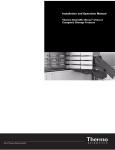
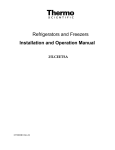
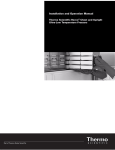
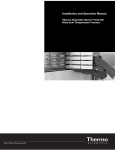
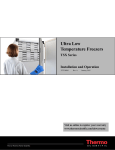
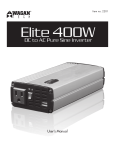
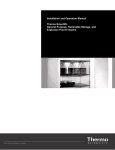
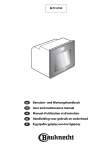
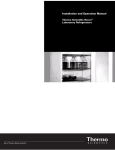
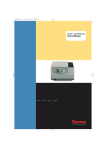
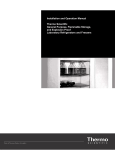
![Cryogenic Freezer - User Manual [EN]](http://vs1.manualzilla.com/store/data/005841262_1-77d7cc3403393239d9b8135bfb24ee2c-150x150.png)
